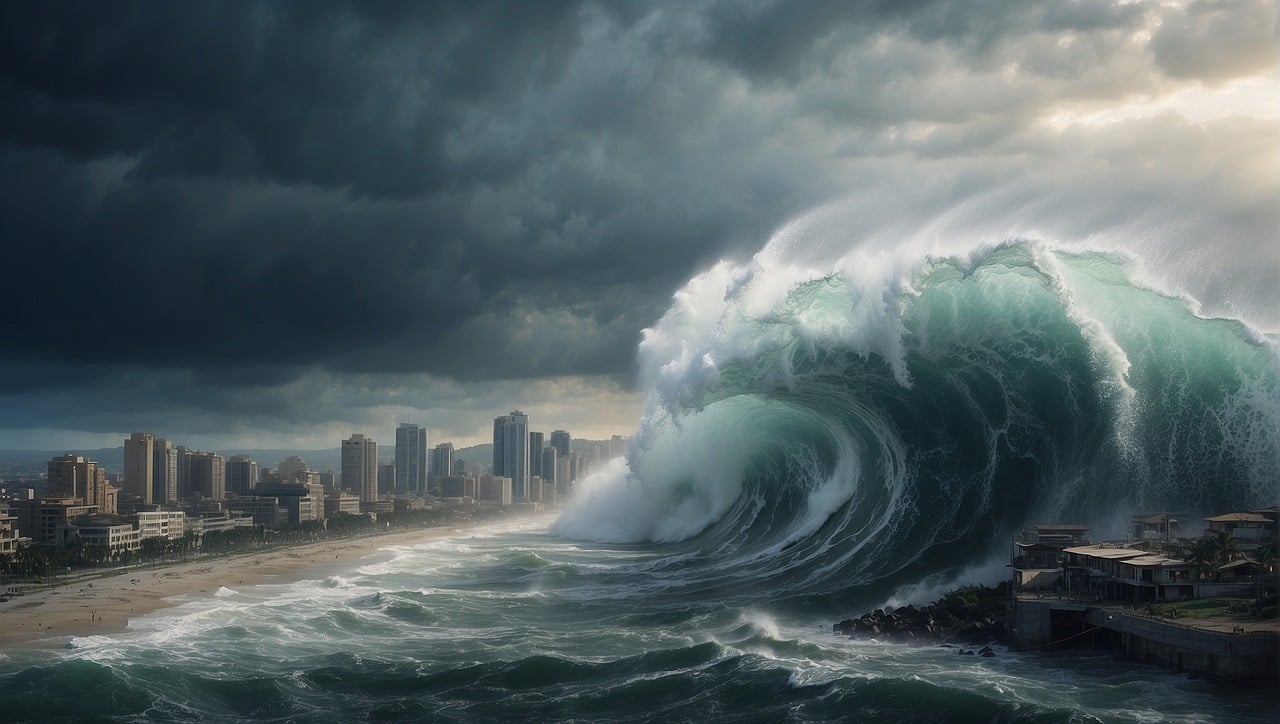by Martin Haffner Associate Editor
In a rare meteorological phenomenon, the South Pacific is currently witnessing the simultaneous development of three tropical cyclones, a situation that has alarmed meteorologists and residents alike. The cyclones—named Tino, Ulysses, and Vicky—are not only impacting local weather patterns but also pose significant threats to several island nations and coastal communities. As climate change continues to reshape weather behaviors, the current situation raises critical questions about the future of storm activity in the region.
- Cyclone Tino: Begun as a tropical depression, Tino quickly intensified into a tropical storm, bringing heavy rainfall and strong winds to parts of Fiji and Samoa. Residents have been advised to prepare for potential flooding and landslides, as the storm is expected to move closer to populated areas in the coming days.
- Cyclone Ulysses: The second cyclone, Ulysses, has become a formidable Category 2 storm. Tracking toward the Solomon Islands, Ulysses has already caused significant disruptions. Evacuations have been ordered in vulnerable regions, and emergency services are mobilizing resources to prepare for the cyclone’s impact.
- Cyclone Vicky: To the east, Cyclone Vicky is still developing, but predictions suggest it could also gain strength in the coming days. The trajectory is uncertain, leading to widespread precautions across several island nations as forecasts raise the possibility of early landfall.
The occurrence of three cyclones at once in the South Pacific is remarkable and has raised eyebrows among climate scientists. Meteorologists suggest that this multi-cyclone event is linked to several environmental factors, including warmer sea surface temperatures, changes in ocean currents, and atmospheric conditions influenced by climate change.
Dr. Emily Santos, a climatologist at the University of the South Pacific, explains, “The South Pacific is a hotbed for tropical cyclone activity, but to have three systems operating concurrently is unusual. It could suggest that these weather patterns are becoming more intense and frequent due to changing climatic conditions.”
The implications for local communities are potentially severe. Governments across the affected islands are on high alert, preparing evacuation plans and mobilizing disaster response teams. Isle Communication services are also under strain as families seek updates on the storms. The threat of intense winds, rain, and storm surges poses immediate risks, while longer-term concerns about food security and infrastructure damage linger.
Fiji’s Prime Minister, Voreqe Bainimarama, addressed the nation: “Our thoughts are with those on the frontlines of these storms. We cannot underestimate the power of nature, and I urge everyone to stay vigilant and follow safety protocols as we face these challenges together.”
The simultaneous activity of these cyclones has caught the attention of meteorologists beyond the South Pacific. The interconnected nature of climate systems means that patterns in this region can have repercussions globally. The scientific community is poised to analyze this event closely, looking for insights that could inform future climate models and disaster preparedness initiatives.
In a statement, the World Meteorological Organization emphasized the need for robust global cooperation: “As extreme weather events grow more frequent and severe, it is imperative that countries work together to share data, resources, and strategies to combat the impacts of climate change.”
As Cyclones Tino, Ulysses, and Vicky churn through the South Pacific, the region faces an unprecedented weather event with potential long-term ramifications. The storms serve as a stark reminder of the power of nature and the urgent need for comprehensive climate action. While local communities brace for immediate threats, scientists and policymakers are called to strategize for a future where such simultaneous meteorological events may become more commonplace.
The resilience of the affected nations will be tested in the coming days, and the world watches closely as these tropical cyclones make their mark on the South Pacific.



